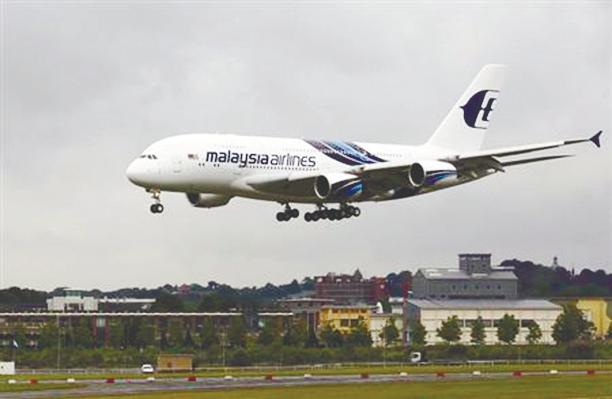Following the Part 1 of Malaysian Airlines, the Airbus A380 story that came out on Jan 5, 2021. Here is the link to that story: http://ipaper.thesundaily.my/epaper/viewer.aspx?publication=The%20Sun%20Daily&date=05_01_2021#page/9
Malaysia Airlines’ workhorse for international routes was the Boeing 747-400 (B747-400), which were then about 18 years old and would have to be phased out in years to come anyway.
To Airbus Industrie, typical of all aircraft manufacturers, the selling point was to have an aircraft with great performance and more fuel efficient engines.
The airline, through a project team consisting of pilots from the technical and development department, together with engineers from the technical services department, would conduct a detailed study on the performance figures provided by the aircraft manufacturer and present their recommendations to the board.
They came up with the decision to order six A380s plus a simulator from a Canadian company to train the crew.
A simulator is necessary for training and biannual checks. Otherwise other airline facilities would have to be used, incurring more costs in terms of simulator usage, crew travel and allowances, and hotel accommodation.
The simulator at the training complex in Subang is however, now underutilised.
While we made the decision to go for it, mega carriers in the Middle East had their plans.
They, too, ordered the giant aircraft, with Etihad and Qatar ordering 10 each and, the biggest of all, Emirates, an unbelievable number of 118.
Together they eventually conquered the Australian and Southeast Asian market, leaving Malaysia Airlines to pick up the crumbs.
That’s the airline business for you – highly volatile and very competitive. So, was it wrong to buy the six then? Personally l don’t think it was wrong to go for it as there was market demand. Malaysia Airlines had to be competitive, and the B747-400 aircraft was aging and had to be phased out. So replacement aircraft had to be ordered in advance.
The A380 itself is superb and high tech, well liked by passengers for its roomy cabin, enchanting cabin lighting and superb in-flight entertainment system.
Pilots also liked the aircraft as flying it was just like playing a computer game.
For in-flight rest, crew bunks were very comfortable, complete with the “bantal pelok”, that some of them found it difficult to wake up to take over flight duties.
In terms of fuel efficiency, it is not much better than the aircraft it replaced, the B747-400. But the A380, has its drawbacks.
Besides being huge coupled with the challenges of filling up seats, the aircraft is not as versatile as the B747-400. Even if the seats can be filled up the yield is low, and more often than not it’s one way traffic.
Furthermore, it simply cannot operate at airports not prepared for it. In Malaysia, KL International Airport (KLIA) is the only airport that can accommodate the aircraft.
Whereas the B747-400 can operate at all major airports in the country – Penang, Langkawi, Kuala Trengganu and Kota Kinabalu with no restrictions.
For Haj Charters, some of the B747 flights operated directly from Penang, Kuala Trengganu and Kota Kinabalu, hence rendering feeder services unnecessary when bringing pilgrims to KLIA.
So, where do we go from here after being caught in an unexpected and undesirable situation?
Malaysia Airlines has decided to turn the fleet into charter operations under a subsidiary, Amal, specialising in Haj and Umrah Charters.
Haj charters are just a once a year affair lasting for a period at most for two to three months only, and the traffic is one way. Full on the way up, empty on the way back and vice versa.
Therefore, the total load factor can be taken as just 50%. So how can we make money?
The Umrah charters are ad hoc, and the market is unpredictable and can be seasonal.
Overall, the operating cost far outweighs the revenue that it can generate. Indeed, the future of the aircraft looks bleek.
Given the dynamics of the aviation industry, both aircraft manufacturers, Airbus Industrie and Boeing have come up with another long range, medium-sized twin-engine aircraft – the Airbus A350 and the Boeing B777X respectively – to take over the airways. They are, again, reputed to be more fuel efficient – a key selling point.
Why operate routes with a four-engine aircraft when it can be done by one with two engines?
Where do we go from here? I would suggest cutting losses, have the aircraft on long-term parking while making continued attempts to sell them.
Perhaps we can approach Qatar Airways to buy them at a discounted price as they could make good use of them.
Qatar would be a better bet due to our close ties with them, and our top officials can probably negotiate a deal for the aircraft.
Singapore Airlines is reportedly planning to take seven of the 19 it has out of the system.
With the Covid-19 pandemic, the aviation industry is badly hit. The more aircraft airlines have, the more losses they will incur.
Into the new year, the future is still uncertain. And that includes the future of Malaysia Airlines’s six Airbus A380.
Capt Mohd Kamil Abu Bakar is a former director of flight operations with Malaysia Airlines. Comments: letters@thesundaily.com











